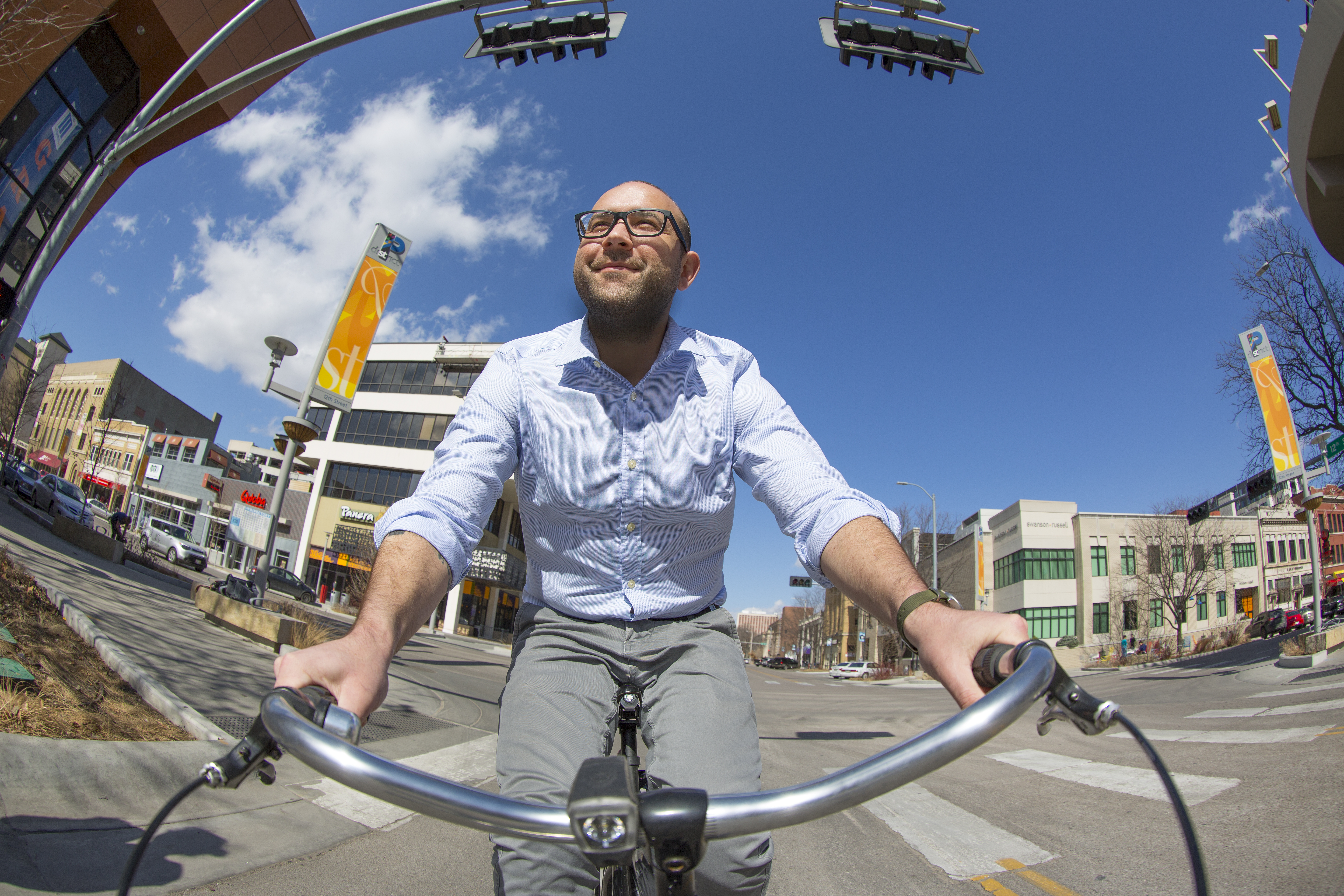
New research co-authored by a transportation expert at the University of Nebraska-Lincoln suggests that bicyclists’ behavior, like that of motorists, often is governed by unspoken rules of the road.
Just as many drivers accept violations of speed limit laws as the norm in certain situations, bicyclists often accept violations of some traffic regulations as the norm under certain circumstances.
However, based upon a recent survey of more than 14,000 Americans, consensus is lacking on how bicyclists should safely maneuver through mixed traffic. Depending upon their bicycling experience, motorists can have very conflicting views on appropriate biking behavior amid automobiles.
The uncertainty about how someone should ride a bike in traffic can be dangerous if a motorist responds aggressively to a cyclist’s actions. Aggressive driving contributes to accidents and near misses. That, in turn, scares many people away from biking.
“We know it’s the Wild West out there,” said Daniel P. Piatkowski, assistant professor in the community and regional planning program of the College of Architecture at Nebraska. “There are all these conflicting ideas of how a bike rider should behave – some legal, some illegal. We found that, regardless of how people are riding, most are doing so to avoid being injured or killed by a driver.”
In most of the United States, traffic laws dictate that bicycles are expected to act like cars. But when they do, drivers tend to think the bike rider is either crazy or rude – or both, Piatkowski said. Rather than passing more laws to govern biking decisions on the roadway, a more effective approach may be to design roadways and other infrastructure for everyone. Research shows that doing this also increases safety for everyone.
For the past several years, Piatkowski has worked with civil engineer Wesley Marshall at the University of Colorado, Denver, and sociologist Aaron Johnson of the University of Colorado, Boulder, on a massive worldwide survey of bicyclists. “The Scofflaw Bicycling Survey,” conducted online in late winter and spring 2015, attracted more than 18,000 respondents around the world.
Piatkowski joined the Nebraska faculty in July 2016, attracted by research opportunities and by Lincoln’s robust system of bike trails and support of cycling transportation.
Piatkowski was lead author of “Identifying behavioral norms among bicyclists in mixed-traffic situations,” the first of three articles to be published based on data collected in the scofflaw survey. It appeared in the journal Transportation Research Part F.
Marshall, Piatkowski and Johnson also co-authored “Scofflaw bicycling: illegal but rational,” published March 8 in the Journal of Transport and Land Use. That article describes the spectrum of illegal behaviors committed by bicyclists and investigates the motivations behind those acts.
In the behavioral norms paper, survey respondents were asked to react to three situations where bike riders appear to violate traffic rules: when cyclists run a stop sign; when cyclists ride in the middle of a traffic lane; and when cyclists bike the wrong way down a one-way street.
Though apparently similar, each of the three scenarios carried significant distinctions. Violating a stop sign is illegal in most jurisdictions, though cyclists often find it safer to keep moving ahead of car traffic; riding in the middle of the lane is legal in many jurisdictions, although motorists may find it obstructive; riding the wrong way on a one-way street is not legal, with violations occurring more for convenience than for safety.
Marshall said he was struck by the significant percentages of respondents who reacted aggressively to each situation. They answered that the actions made them mad or made them want to confront the bicyclist.
“When a perfectly legal bicycling maneuver like taking the middle of the lane elicits an aggressive response from a significant number of drivers, that is a big problem,” Marshall said. “This sort of disconnect helps explain a lot of the behaviors we’re seeing out there.”
Although nearly 65 percent of the respondents were accepting of cyclists’ running a stop sign at a four-way stop, aggressive responses came from drivers who said they followed the rules of the road while cycling and those who said they were comfortable cycling in traffic.
“The more one rides a bike, the less likely they are to respond aggressively to another rider,” Piatkowski said. “Aggressive responses are significantly correlated with how one might behave in a similar situation, suggesting the behavior is guided by an informal norm based on personal experience, rather than the law,” Piatkowski said.
More than 82 percent were accepting of a bicyclist “taking the lane” on a narrow street, even though it made it hard for the motorist to pass. In this situation, benevolent responses were more likely among bicyclists with a good knowledge of and adherence to traffic rules. By taking the lane instead of hugging the edge of the traffic way, a cyclist avoids getting doored by a motorist exiting a parked car and reduces the possibility of getting hit by a car trying to pass in a place that’s too narrow.
“Though the bike is impeding vehicles, those who engage in this behavior consider it an acceptable way to ride on a narrow road and are less likely to have an aggressive response as a driver,” Piatkowski said.
More than 68 percent responded aggressively to the bicyclist traveling the wrong way down a one-way street. Bicyclists who follow the rules of the road, wear helmets and always come to a complete stop at stop signs were more likely to respond negatively. Cyclists who doubted others’ cycling ability or who admitted using a cellphone while pedaling were less likely to respond aggressively to a wrong-way rider.
“These results suggest that people are making judgments about appropriate bicycling based on their own experience,” Piatkowski said. “And that’s a problem. It means traffic laws or street design are not working.”








